The Language Access Basic Training (LABT) is a downloadable interactive training, which serves as an introduction to language access for all court employees. It is a collaborative project of the New Mexico Administrative Office of the Courts (AOC) through the New Mexico Center for Language Access (NMCLA), funded by SJI and supported by the National Center for State Courts (NCSC) and the Language Access Advisory Committee of the Council of State Court Administrators (COSCA). The project’s Advisory Board consisted of stakeholders from 7 states including: Arizona, Colorado, Nebraska, New Jersey, North Carolina, Oregon and Texas.
The purpose of the training is to ensure that all court employees have a basic understanding of their ethical and legal obligations, as well as current best practices in serving limited English proficient and non-English speaking individuals. Available in language neutral and Spanish, LABT also provides a training module for bilingual court employees as well as an optional skills assessment module. The training will be administered by NCSC. Customization services are available through the NMCLA.
The training program consists of three modules: 1) Fundamentals; 2) Bilingual Skills Building; and 3) Bilingual Skills Assessment.
The Fundamentals Module is intended to train both monolingual and bilingual staff in state courts. The module is divided into four sections:
- Overview describes the legal basis for language access services;
- Professional Standards explores best practices in language access;
- Roles of Court Staff details the differing roles of interpreters, bilingual staff, and monolingual staff in the provision of language access services; and
- Cultural Competency and Customer Service examines the importance of cultural differences in providing good customer service.
The module is designed to be a rich learning experience, using video, graphics, scenarios, and expert commentary to make topics engaging, accessible, and easy to understand. Expert commentary is provided by professionals in the field with varying perspectives, including judges, language access specialists, court administrators, clerks, and representatives from the NCSC and COSCA.
The Bilingual Skills Building Module is specific to bilingual court staff. The module is available in language neutral and Spanish and includes three main sections:
- Terminology Acquisition covers theory and exercises on how to effectively research legal terminology in both languages;
- Language Access Facilitation includes lessons and exercises in consecutive interpreting and sight-translation;
- Guidelines for Practice challenges trainees to apply concepts and techniques in an interactive environment.
The self-paced practice module includes lessons, quizzes and exercises as well as self- evaluation tools. This way, trainees can effectively learn, evaluate their performance and keep track of their progress.
The Bilingual Skills Assessment Module is also specific to bilingual court staff. The module evaluates trainees’ comprehension of LABT content and skills in their language pair. Trainees complete the skills assessment module online and submit it for rating or feedback. Two pilots were conducted to test the technologies and content of the program. The first pilot took place in New Mexico, with a focus group. The second was comprehensive – with a total login count of one hundred and thirty-six (136) trainees from seven states and served as a collaborative effort between the AOC, NCSC, and the advisory board states; feedback collected was overall very positive. The program will be available this summer online through the NCSC.

